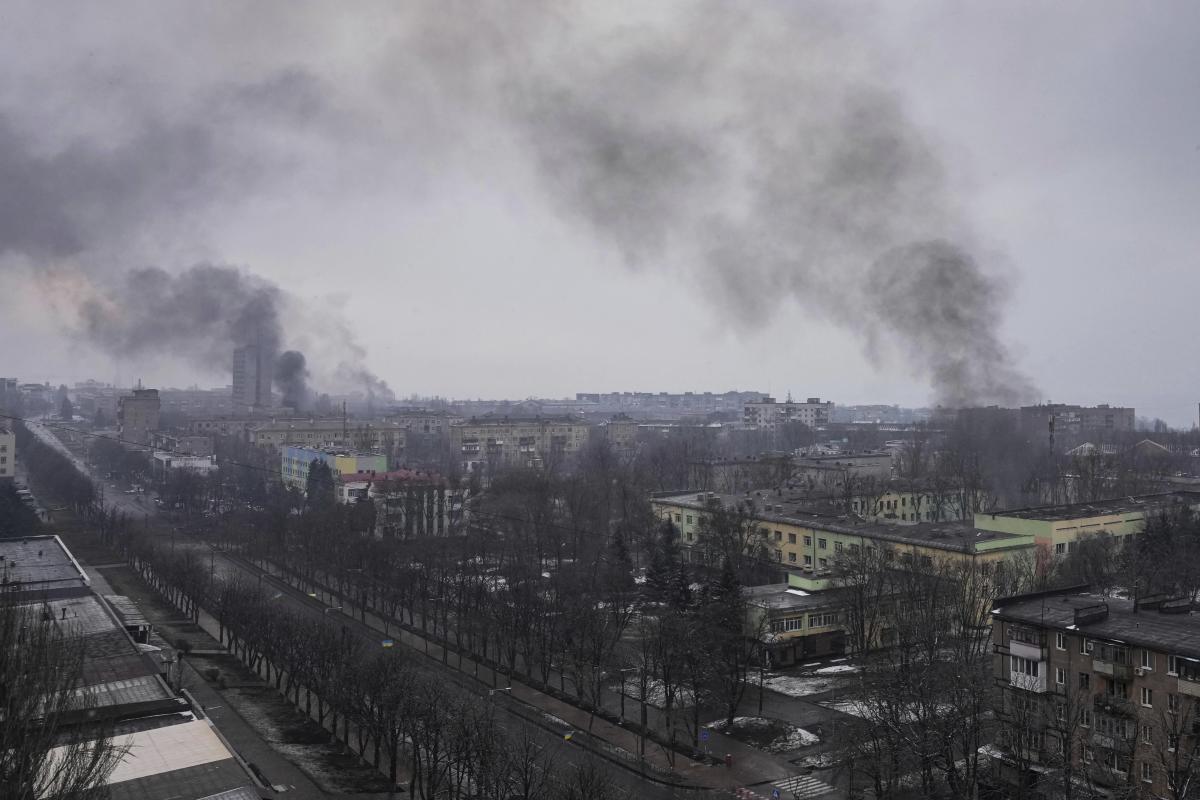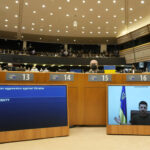
Civilians trapped in besieged or destroyed cities and towns in Ukraine are suffering from electricity outages, food shortages and other vital services. Thousands are hoping to find relief through safe exits Thursday agreed upon by Ukraine and Russia.
If the humanitarian corridors hold during an expected daylong ceasefire in these areas, it will mark the third consecutive day for such relief efforts. Already, 35,000 people have been able to flee through these safe corridors.
Ukrainian President Volodymyr Zelenskyy said humanitarian corridors from three different parts of the country functioned Wednesday. A total of seven evacuation routes were expected on Thursday.
“We’ll pray we can get people out of Mariupol,” Zelenskyy said, referring to the port city that’s been under siege for nine days, home to nearly half a million people. A mass grave was dug to quickly bury bodies of people who died from shelling or natural causes in the city. An airstrike hit a maternity ward there on Wednesday.
The foreign ministers of Ukraine and Russia are meeting Thursday in Turkey in their highest-level talks thus far.
The two-week-long war has forced 2 million people to flee the country, half of them children.
Here’s a look at key things to know about the war:
WHAT HAS THE AP DIRECTLY WITNESSED OR CONFIRMED?
In AP video of Wednesday’s airstrike on the maternity hospital in Mariupol, thunderous bangs were followed by the sounds of glass breaking and car alarms going off as smoke rose from beyond a nearby building. Among those wounded in the airstrike were women waiting to give birth.
Rescue workers evacuated the injured, including a pregnant woman on a stretcher. Her face was pale and she grabbed her belly before she was loaded into an ambulance. Outside the hospital, a woman holding a small child cried uncontrollably while a Ukrainian soldier bandaged another woman’s head.
The World Health Organization says it has confirmed 18 attacks on medical facilities since the Russian invasion began two weeks ago.
Workers in Mariupol on Wednesday also unceremoniously buried at least 70 people, some soldiers and some civilians, in a trench dug in a cemetery in the heart of the city.
AP photographers and journalists documented civilians from towns northwest of the capital making their way toward Kyiv on Wednesday through a humanitarian corridor. With sporadic gunfire echoing behind them, firefighters dragged an elderly man to safety in a wheelbarrow, a child gripped the hand of a helping soldier, and a woman inched her way along, cradling a fluffy cat inside her winter coat.
ARE PEOPLE BEING SAFELY EVACUATED?
Ukraine’s president said three humanitarian corridors operated on Wednesday out of Sumy in the northeast near the Russian border, from suburbs of Kyiv and from Enerhodar, the southern town where Russian forces took over a large nuclear plant.
He said there are plans to evacuate civilians from the cities of Izyum and Volnovakha on Thursday, and voiced hope that Mariupol could, as well.
WHAT ELSE IS HAPPENING ON THE GROUND?
Russian forces have captured several cities in the Kyiv suburbs and are still trying to take Chernihiv in the north, as well as advance on the cities of Mykolaiv, Kryviy Rih, Voznesensk and Novovorontsovka in the south, the general staff of Ukraine’s armed forces said Thursday.
Russia has deployed more than 150,000 troops and retains large and possibly decisive advantages in firepower, despite facing fierce Ukrainian resistance and global financial pressure aimed at crippling its economy.
European nations have sent weapons to Ukraine’s military. The U.S. House of Representatives approved a bill Wednesday night that would rush $13.6 billion in American aid to Ukraine and its European allies, nearly half of that for sending troops and weapons to Eastern Europe and equipping allied forces there.
Civilian authorities reported Russian bombing overnight in the suburbs of Kyiv, and two other cities, as well as artillery fire on Kharkiv, the country’s second largest city, in the east.
The Ukrainian government says about 20,000 foreigners have joined the so-called the International Legion for the Territorial Defense of Ukraine, where they are given weapons to fight when they arrive. Several thousand U.S. citizens have requested to join, but there is concern among independent security experts that the fighting could also draw more white supremacists, who are believed to be fighting on both sides of the conflict.
WHAT’S THE VIEW FROM INSIDE RUSSIA?
Scattered protests against the war continue in the country, but people in Russia are losing sources of information about what is happening.
Heineken, Universal Music and Discovery joined other large companies such as McDonald’s, Starbucks, Coca-Cola, PepsiCo and General Electric in suspending business in Russia.
Amazon said it is suspending shipments of goods sold on its website to customers in Russia and Belarus and barring new third-party sellers from those countries. It also said its cloud computing network, Amazon Web Services, would stop allowing new sign-ups from Russia and Belarus.
___
Follow the AP’s coverage of the war between Russia and Ukraine: https://apnews.com/hub/russia-ukraine




